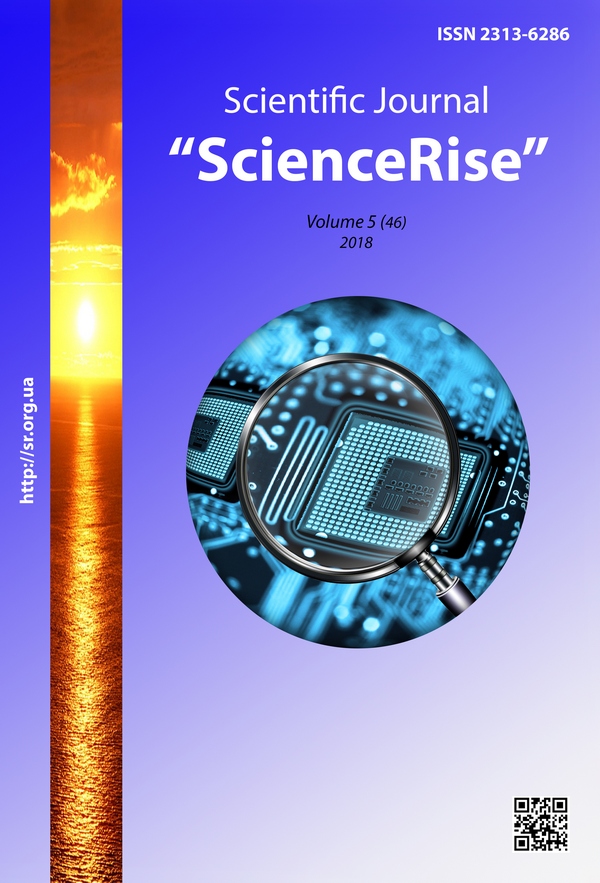Analysis of main trends in improving quality characteristics of meat products
DOI:
https://doi.org/10.15587/2313-8416.2018.131592Keywords:
meat, modern trends, elastic emulsion, sodium alginate, structuring, enrichment, beefAbstract
An analytical review of literary materials on improvement of organoleptic, structural-mechanical and qualitative indices of quality of meat products is presented. The ways of improvement of quality indicators and modern directions of introduction of plant material to technologies of meat products and ways of using different kinds of hydrocolloids in the technologies of meat products are revealed
References
Kravchuk, N. M., Koretskaya, I. L. (2014). Innovative restaurant technologies. Kyiv: NUKHT, 114.
Pivovarov, P. P., Grinchenko, O. O., Mikhailov, V. M., Ivanov, S. V., Kovalenko, A. A., Pivovarov, E. P. et. al. (2011). Innovative technologies of production of food products of the new generation of mass consumption. Available at: http://www.kdpu-nt.gov.ua/work/%D1%96nnovats%D1%96in%D1%96-tekhnolog%D1%96%D1%97-virobnitstva-kharchovo%D1%97-produkts%D1%96%D1%97-novogo-pokol%D1%96nnya-masovogo-spozhiva
Pasichniy, V. M., Yastreba, Yu. A. (2010). Investigation of structural and mechanical properties of alginate gels for the production of structured products on the basis of mushroom raw materials. Equipment and technologies of food production, 24, 256–261.
Grinchenko, O. A. (2005). Scientific substantiation and development of technology of culinary production on the basis of semi-products of functional compositions. Kharkiv, 386.
Bolshakova, V. A. (2001). Technology of paste emulsion type with the use of grain raw materials. Kharkiv, 286.
Pivovarova, O. P. (2009). The technology of semi-finished products restructured on the basis of mushrooms. Kharkiv, 274.
Kochetkova, A. P., Kolesnikov, A. Yu. (1999). The Modern Theory of Positive Nutrition and Functional Products. Food production, 4, 7–10.
Necheurenko, K. B., Pivovarov, P. P., Nekles, O. P. (2014). Pat. No. 105987 UA. A method of obtaining a solid emulsion and a solid emulsion. MPK (2014) A23D 9/007, A23D 9/02. No. a 2013 03965; declareted: 01.04.2013; published: 10.07.2014, Bul. No. 3, 5.
Zhuravskaya, N. K., Alekhina, L. T., Oryashenkova, L. M. (1985). Research and quality control of meat and meat products. Moscow: Agropromizdat, 295.
DSTU ISO 5983: 2003. Animal feed. Determination of nitrogen content and calculating the content of crude protein. Kjendal method (ISO 5983: 1997, IDT) (2005). Kyiv: Derzhspozhyvstandart of Ukraine,8.
DSTU ISO 5984: 2004. Forages for animals. Determination of crude ash content. (ISO 5984: 2002, IDT) (2005). Kyiv: Derzhspozhyvstandart of Ukraine, 4.
DSTU ISO 6492: 2003. Animal feed. Determination of fat content (ISO 6492: 1999, IDT) (2005). Kyiv: Derzhspozhyvstandart of Ukraine, 8.
Ingredients for animal feed. Determination of the content of amino acids (ISO 13903: 2005) (2005). Kyiv: Derzhspozhyvstandart of Ukraine, 13.
GOST 104444.15-94. Food products. Method of determination of the number of mesophilic aerobic and facultative anaerobic microorganisms (1996). Kyiv: Gosstandart of Ukraine, 16.
Methodological instructions on sanitary-microbiological control at catering enterprises and trade in food products No. 2657-82 (1984). Moscow: Ministry of Education of the USSR, 54.
GOST 50480-93. Food products. Method of detection of bacteria of the genus Salmonella (1993). Moscow: Publishing of Standards, 16.
Lisitsin, A. B., Lipatov, N. N., Kudryashov, L., Aleksakhina, V. A.; Lipatov, N. N. (Ed.) (2005). Production of meat products on the basis of biotechnology. Moscow: VNIIMP, 369.
Kovalchuk, V. A. (2012). Livestock and meat processing: modern methods of wastewater treatment. Meat business, 2, 65–67.
Brik, G. B., Tkachenko, D. M. (2012). Ways of increasing the efficiency of processing of non-food wastes of the meat processing industry. Meat business, 10, 24–25.
Raksha-Slyusareva, O., Krul, V. (2013). Meat cut products of functional purpose. Goods and Markets, 2, 74–86.
Downloads
Published
Issue
Section
License
Copyright (c) 2018 Svetlana Shapoval, Yakubian Sarkis, Kristina Nechepurenko

This work is licensed under a Creative Commons Attribution 4.0 International License.
Our journal abides by the Creative Commons CC BY copyright rights and permissions for open access journals.
Authors, who are published in this journal, agree to the following conditions:
1. The authors reserve the right to authorship of the work and pass the first publication right of this work to the journal under the terms of a Creative Commons CC BY, which allows others to freely distribute the published research with the obligatory reference to the authors of the original work and the first publication of the work in this journal.
2. The authors have the right to conclude separate supplement agreements that relate to non-exclusive work distribution in the form in which it has been published by the journal (for example, to upload the work to the online storage of the journal or publish it as part of a monograph), provided that the reference to the first publication of the work in this journal is included.

